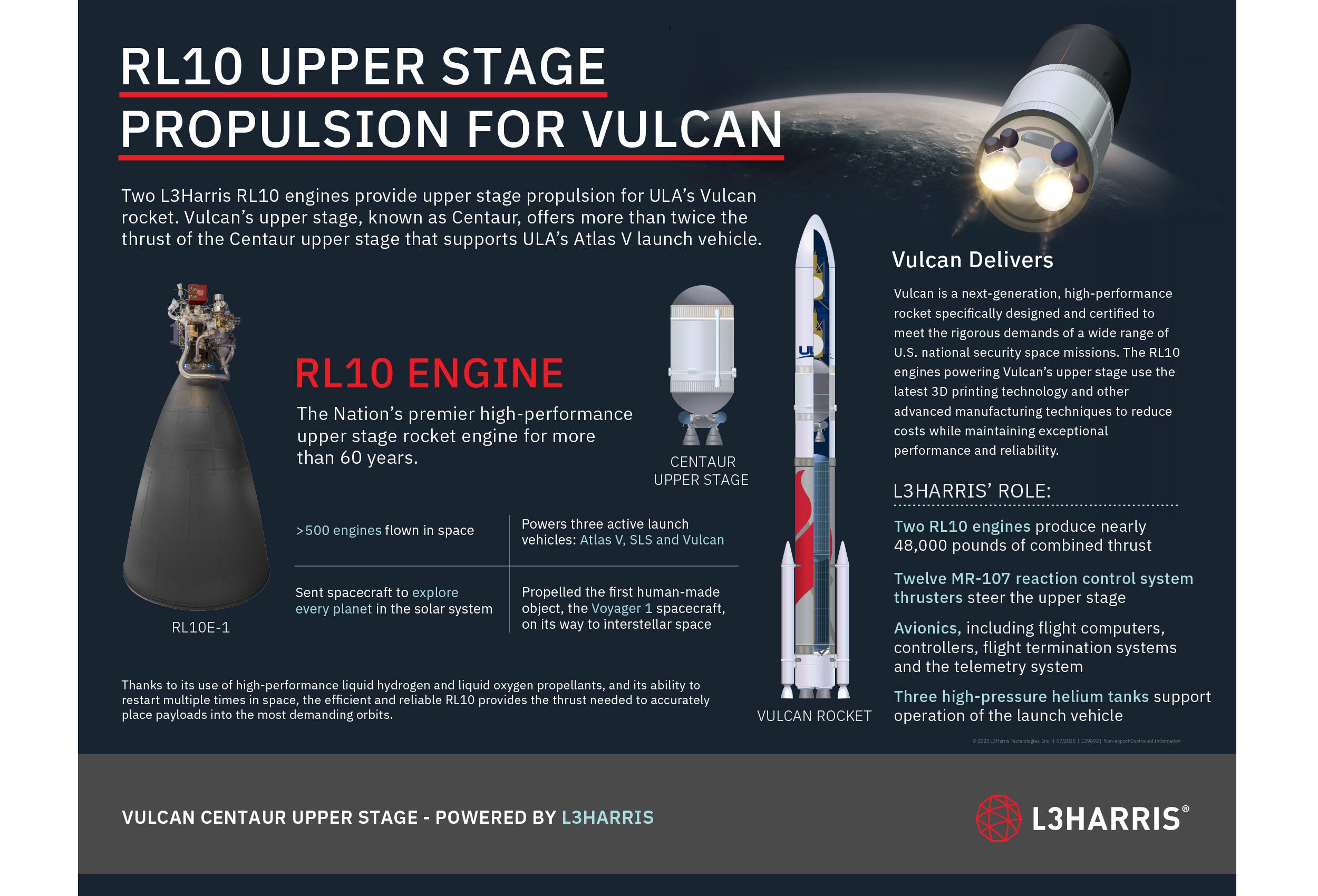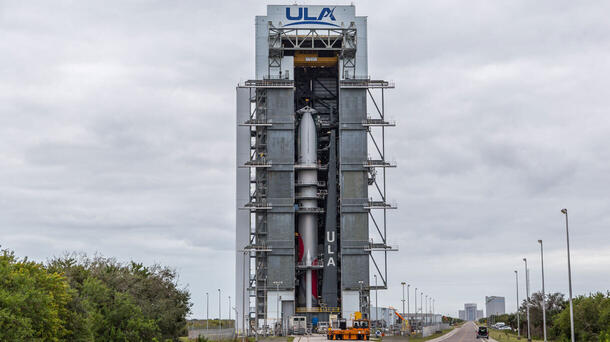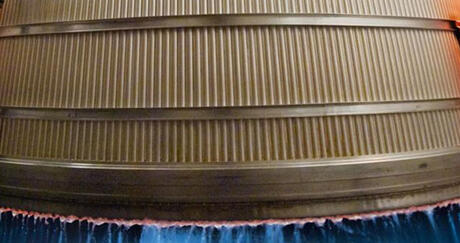LOS ANGELES – When the next-generation Vulcan rocket developed by United Launch Alliance (ULA) takes flight for the first time in the coming days, it will usher in a new era for the RL10 upper-stage rocket engine built by Aerojet Rocketdyne, an L3Harris Technologies company. Versions of the RL10 have been reliably propelling payloads into space for 60 years, and that bright legacy is set to continue with the Vulcan rocket.
Vulcan’s inaugural flight, from Cape Canaveral Space Force Station, Fla., will debut the enhanced Centaur V upper stage evolved from the flight proven and highly successful Atlas V Centaur III upper stage. This new stage offers twice the thrust of the Centaur III upper stage and it will be powered by Aerojet Rocketdyne propulsion, including: two RL10 engines generating roughly a combined 48,000 pounds of thrust, 12 MR-107 attitude-control thrusters, and pressurized helium tanks that support operation of the launch vehicle.
Built in West Palm Beach, Fla., the RL10 is the most reliable and highest-performing upper stage engine flying today, entrusted with launching everything from astronauts to one-of-a-kind robotic spacecraft to high-value military and commercial satellites. The Vulcan program, with its deep and diverse manifest, ensures that the ever-evolving RL10 will remain an industry workhorse well into the future.
“The RL10 has an impressive track record of accurately placing payloads into orbit, thanks to its precision control system and restart capability,” said George Prueger, senior director of RL10 programs at Aerojet Rocketdyne.
Vulcan’s debut mission will send Astrobotic’s Peregrine lunar lander to the Moon using the Centaur V powered by twin RL10C-1-1A engines. The RL10C-1-1, which debuted on the Atlas V in May 2021, features an additively manufactured fuel injector and a lightweight composite nozzle that adds performance.
Beginning in 2025, the Centaur V will use the even more advanced RL10C-X, which adds a 3D-printed combustion chamber and larger lightweight composite nozzle to increase performance over the RL10C-1-1, Prueger said.
“3D printing enables Aerojet Rocketdyne to manufacture the copper chamber in much less time than it takes to build our traditional tube-walled chamber,” Prueger said. “That will enable Aerojet Rocketdyne to dramatically increase production rates while reducing costs.”
The higher volume will help Aerojet Rocketdyne fulfill a 116-engine order from ULA to support Vulcan launches for the 3,236-satellite Kuiper constellation.
The RL10 is not the only Aerojet Rocketdyne program ramping up for ULA’s new rocket. Across the country in Redmond, Wash., the company is gearing up to produce 900 MR-107 attitude control thrusters for the Centaur V – enough for more than 70 Vulcan missions.
Each Centaur V relies on four rocket engine modules (REMs) containing 12 MR-107s for steering, control, and propellant settling as it travels through space. The MR-107s are bigger and far more powerful than the MR-106 thrusters used on the Atlas V’s smaller Centaur upper stage.
Like the RL10, the MR-107 has a heritage that goes back decades, attesting to Aerojet Rocketdyne’s ability to adapt designs to meet customer performance, reliability and cost requirements.
The first Vulcan flight will also rely on three Aerojet Rocketdyne composite overwrapped pressure vessels that store high-pressure helium to support operation of the rocket.
“Aerojet Rocketdyne is continually improving our products while maintaining their tremendous reliability. I’m looking forward to seeing the first flight of Vulcan,” said Prueger.


